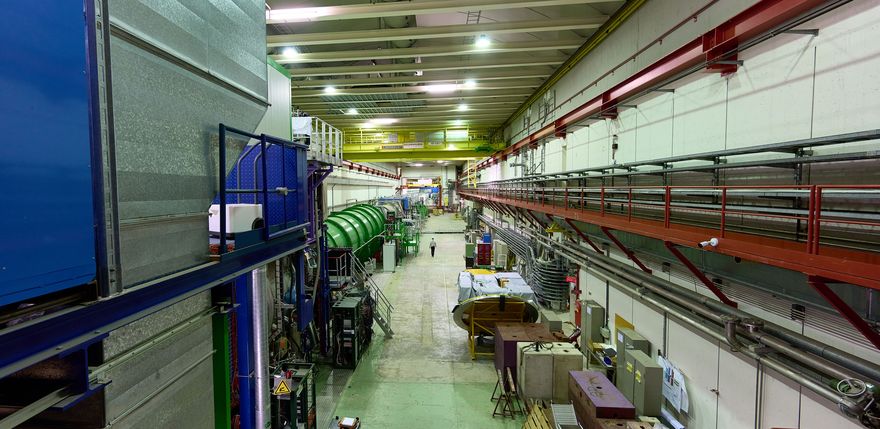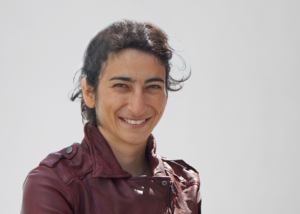The Standard Model of particle physics describes how the matter of the universe is structured in the subatomic regime and which forces act between the elementary particles. However, the Standard Model is not “finished” in the sense of complete. Experiments provide ever more precise measurement results, which can be used to verify theoretical predictions.
One of these experiments is NA62. In this experiment, proton beams from the SPS accelerator at CERN are fired at a beryllium target. Scientists use it to study the very rare decay of the K meson (kaon for short), a particle consisting of two quarks. During decay, the kaon can transform into two neutrinos and a pion, another, lighter type of meson. According to theoretical predictions, only about one in 10 billion kaons decays in this way. The theory's prediction for this decay is very accurate, so even the smallest deviations would show up clearly in experiment. This, in turn, would be an indication of "new physics" beyond the Standard Model.
The beam dump project
In addition to the decay of K mesons, the NA62 experiment can be used to address other questions that cannot be explained by the Standard Model, such as what dark matter is made of. The group at MPP is involved in a project that uses the SPS proton beam to search for new, exotic particles. In the NA62 experiment, most of the protons end up as "particle junk" in the so-called beam dump.
However, these protons are valuable material for particle decays. These could also produce previously unknown, long-lived particles that interact very weakly with matter – a property that is typical of dark matter. These particles would succeed in passing through a three-meter-thick wall at the beginning of the experiment. Their tracks could then be measured in the 130-meter detector area of NA62.
The focus of our group is on the theoretical predictions, computer models and on the measurements. The NA62 experiment has about 200 active participants from 14 nations. The first measurement data were collected in 2015, and current measurements will continue until 2025. After the upgrade of the CERN accelerator facilities, operations will continue with the successor experiment HIKE (High Intensity Kaon Experiments).
More information on the group
Group members
E-mail address: e-mail@mpp.mpg.de
Phone number: +49 89 32354-extension
name
function
e-mail
extension
office
Ayyagari, Sri Vrushank
Student
sri.ayyagari
546
A.3.68
Döbrich, Babette, Dr.
Senior Scientist
babette.doebrich
205
A.3.95
Jerhot, Jan, Dr.
Postdoc
jan.jerhot
546
A.3.95
Lezki, Samet, Dr.
Postdoc
samet.lezki
205
A.3.93
Lo Chiatto, Prisco, Dr.
Postdoc
prisco.lo.chiatto
614
A.2.79
Lombardi, Luca
Student
luca.lombardi
546
A.3.68
Marczika, András
Student
andras.marczika
546
A.3.68
Ortmann, Tobias
Postdoc
tobias.ortmann
583
A.3.70
Redl, Julia
Secretary
julia.redl
334
A.3.47
Schubert, Jonathan
PhD Student
jonathan.schubert
546
A.3.68
Sturm, Annette
Secretary
annette.sturm
482
A.3.45
Group members
Phone number: +49 89 32354-extension
| name | function | extension | office | |
|---|---|---|---|---|
| Ayyagari, Sri Vrushank | Student | sri.ayyagari | 546 | A.3.68 |
| Döbrich, Babette, Dr. | Senior Scientist | babette.doebrich | 205 | A.3.95 |
| Jerhot, Jan, Dr. | Postdoc | jan.jerhot | 546 | A.3.95 |
| Lezki, Samet, Dr. | Postdoc | samet.lezki | 205 | A.3.93 |
| Lo Chiatto, Prisco, Dr. | Postdoc | prisco.lo.chiatto | 614 | A.2.79 |
| Lombardi, Luca | Student | luca.lombardi | 546 | A.3.68 |
| Marczika, András | Student | andras.marczika | 546 | A.3.68 |
| Ortmann, Tobias | Postdoc | tobias.ortmann | 583 | A.3.70 |
| Redl, Julia | Secretary | julia.redl | 334 | A.3.47 |
| Schubert, Jonathan | PhD Student | jonathan.schubert | 546 | A.3.68 |
| Sturm, Annette | Secretary | annette.sturm | 482 | A.3.45 |
Key publications
Measurement of the very rare K++→π+νν‾π+νν decay
NA62 Collaboration (Eduardo Cortina Gil)
JHEP 06 (2021) 093
DOI: 10.1007/JHEP06(2021)093
New Physics Searches at Kaon and Hyperon Factories
Evgueni Goudzovski, Diego Redigolo, Kohsaku Tobioka, Jure Zupan, Gonzalo Alonso-Álvarez
Rept.Prog.Phys. (2022)
DOI: 10.1088/1361-6633/ac9cee
ALPtraum: ALP production in proton beam dump experiments
Babette Döbrich, Joerg Jaeckel, Felix Kahlhoefer, Andreas Ringwald, Kai Schmidt-Hoberg, DESY
JHEP 02 (2016) 018, JHEP 02 (2016) 018
https://inspirehep.net/literature/1409104
The Beam and detector of the NA62 experiment at CERN
NA62 Collaboration (Eduardo Cortina)
JINST 12 (2017) 05, P05025
DOI: 10.1088/1748-0221/12/05/P05025
Key publications
Measurement of the very rare K++→π+νν‾π+νν decay
NA62 Collaboration (Eduardo Cortina Gil)
JHEP 06 (2021) 093
DOI: 10.1007/JHEP06(2021)093
New Physics Searches at Kaon and Hyperon Factories
Evgueni Goudzovski, Diego Redigolo, Kohsaku Tobioka, Jure Zupan, Gonzalo Alonso-Álvarez
Rept.Prog.Phys. (2022)
DOI: 10.1088/1361-6633/ac9cee
ALPtraum: ALP production in proton beam dump experiments
Babette Döbrich, Joerg Jaeckel, Felix Kahlhoefer, Andreas Ringwald, Kai Schmidt-Hoberg, DESY
JHEP 02 (2016) 018, JHEP 02 (2016) 018
https://inspirehep.net/literature/1409104
The Beam and detector of the NA62 experiment at CERN
NA62 Collaboration (Eduardo Cortina)
JINST 12 (2017) 05, P05025
DOI: 10.1088/1748-0221/12/05/P05025

![[Translate to English:] #33191 On the right: The calorimeter of the NA62 experiment, with which the particle energy is measured. On the left is the green Ring Imaging Cherenkov (RICH) detector, which is used to identify the positively charged pions (Photo: CERN)](/fileadmin/_processed_/3/f/csm_202407-174_1_abf6a97eeb.jpg)
![[Translate to English:] Prof. Dr. Johannes Henn and Dr. Babette Döbrich (Photos: A. Griesch/MPP; privat))](/fileadmin/_processed_/9/5/csm_Henn-Doebrich_55fda93103.jpg)
